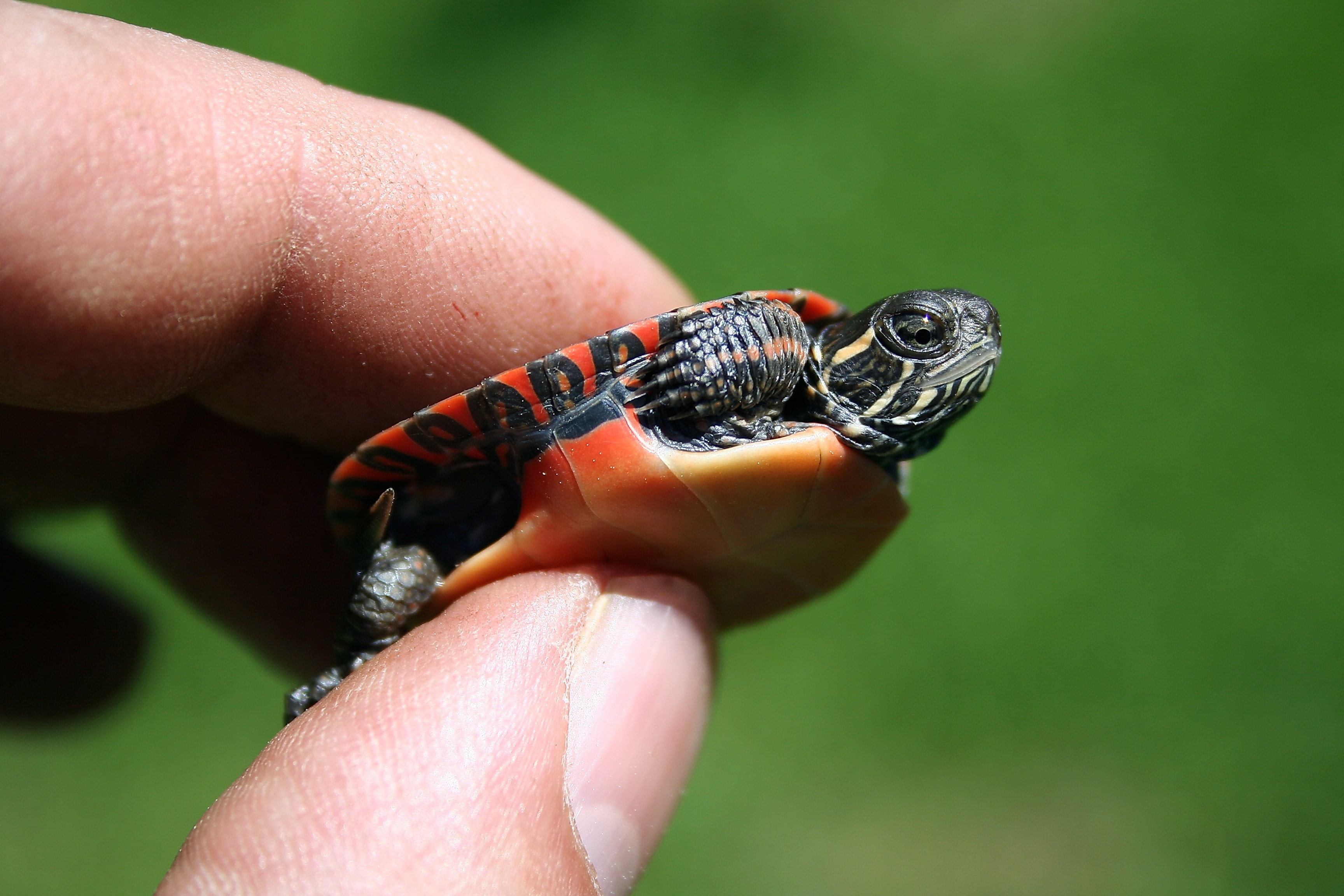Painted Turtle

Decorated and Distinct
Named for their ornate markings on their shells, painted turtles are one of the most distinct and recognizable species of turtle. These critters have wide, dark shells with unique colorful stripes across their belly, legs, and neck.
The average size of painted turtles ranges from 4 to 12 inches, with females typically larger than males. They are among the most common turtles in North America and make excellent pets due to their docile nature. Like other species of turtles, they require a long commitment as they live on average 25-35 years – though they can occasionally live past 50!
Native Habitat
Painted turtles are found all across North America. The four subspecies of painted turtle (Eastern, Western, Southern, Midland) all show subtle differences in appearance and come from different regions, but are very similar. These turtles are found in ponds and around small lakes across North America. As a diurnal (daytime) creature, you’re most likely to see them basking on logs in the sun. Although not overly social, they are regularly found in groups.
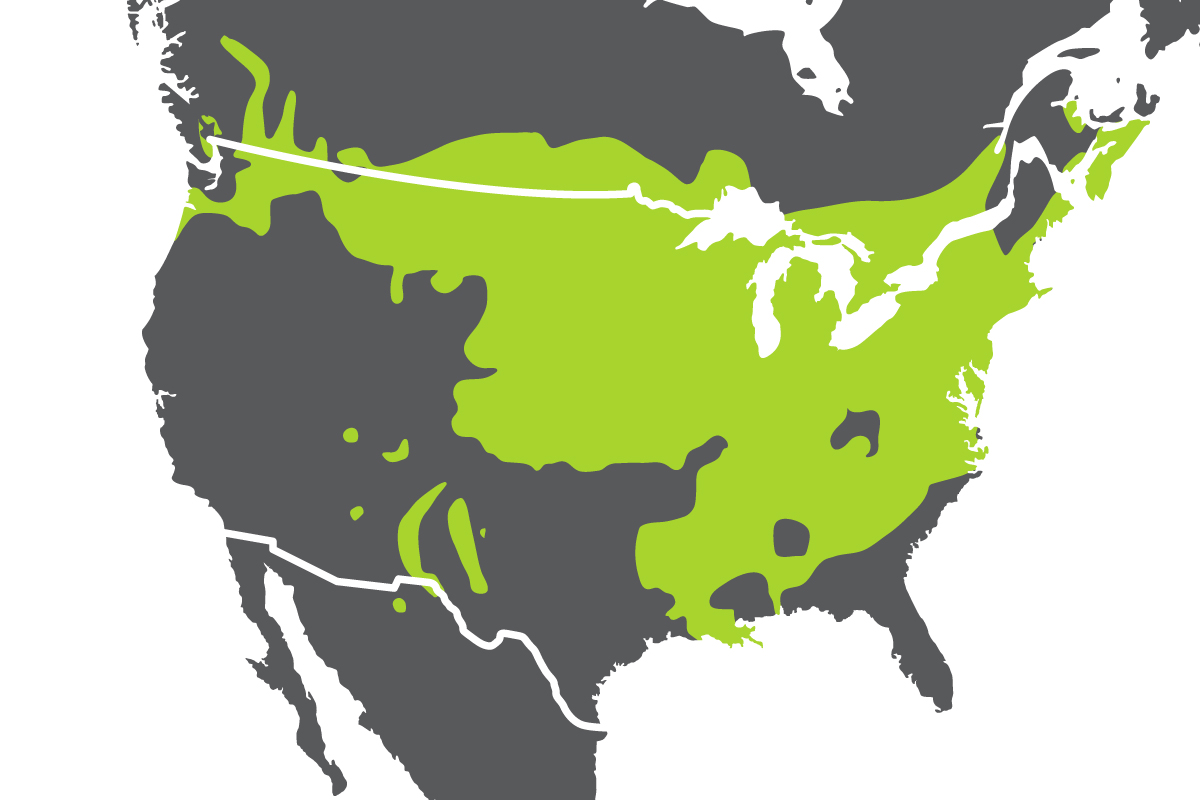
Recommended Housing And Accessories
Aquatic turtles like the painted turtle require a lot of water in their tank. Large tanks of 100 gallons or more are recommended for full-grown turtles, such as the Aqueon Standard Glass Terrarium. Water quality is crucial, so pair your aquarium with a good filter like the Aqueon Quietflow® Canister Filter. Water care products like Zilla Water Conditioner, Zilla Miracle Ball, and Zilla PURE can help you maintain safe and healthy water, as well as significantly reduce time spent on upkeep.
They also require a dry basking area warm up and regulate their metabolism. A basking spot can be made using sand/soil and flagstone to create an artificial shoreline. Stone absorbs heat evenly, creating a basking area that warms from above and below for better thermoregulation. You can also use accessories like the Zilla Freestanding Floating Basking Platform.
For the bottom of your tank, use a substrate made for freshwater aquatic environments like Aqueon Plant and Shrimp Aquarium Substrate.
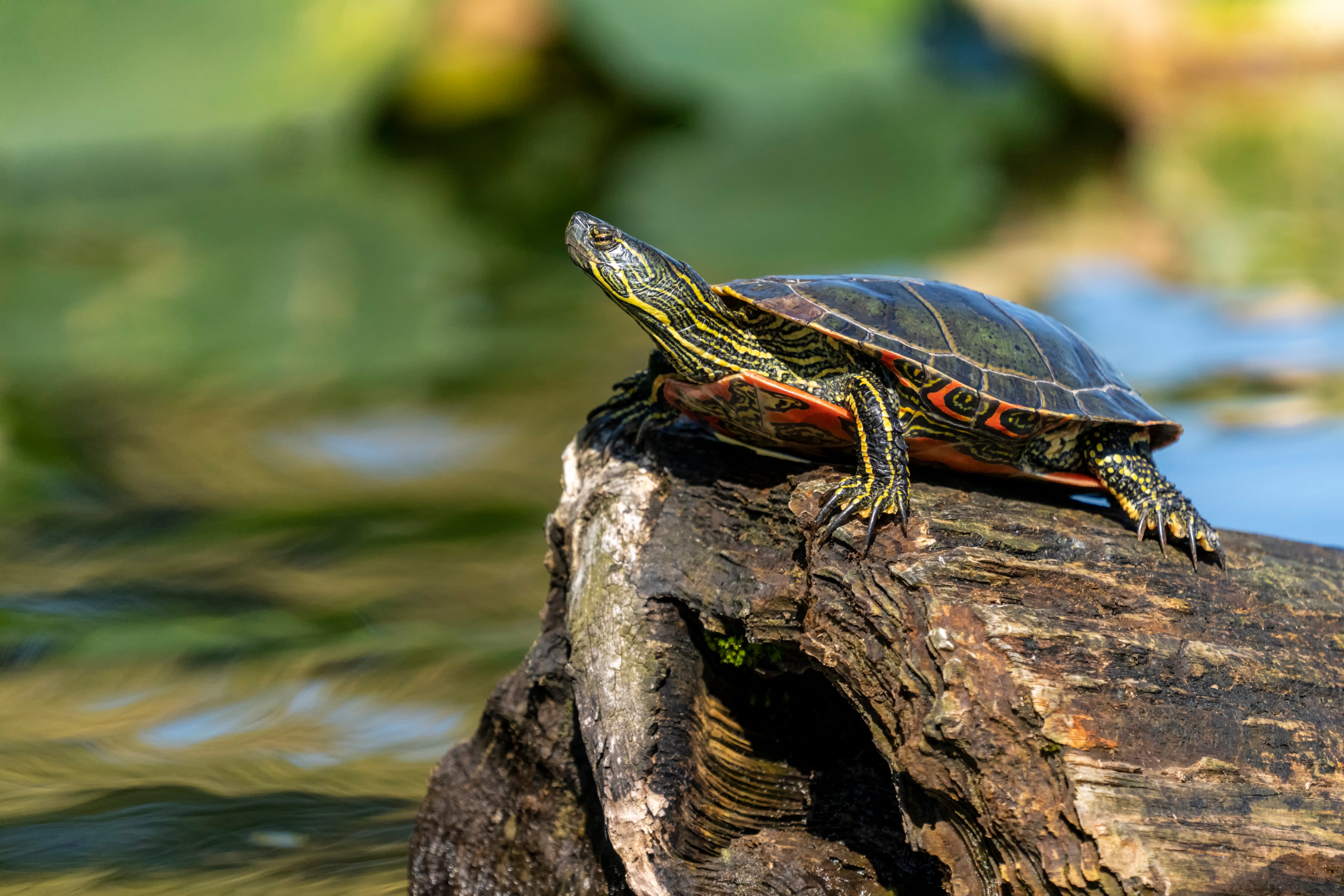
Temperature and Lighting
Painted turtles require a thermal gradient in their habitat – a warm side and a cool side. An ideal temperature range is between 70-95°F, with the basking area on the warmest side. The gradient can be created with Zilla Incandescent Spot Bulbs or Zilla Mini Halogen Bulbs. You can also use heat emitters like the Zilla Aquatic Reptile Heater to help with consistent overall water warmth.
UVA and UVB is a necessity for a healthy turtle. Painted turtles housed outside receive natural UVB rays from the sun, but indoor turtles require UVB lighting and supplemental heat lights for 12 hours a day. Make sure to provide access to UVA/UVB on basking platforms using any Zilla Fluorescent UVA/UVB bulb. Remember to replace bulbs every 6 months.
For more information on UV lighting, read Understanding UVA, UVB, and UVC Reptile Lighting.
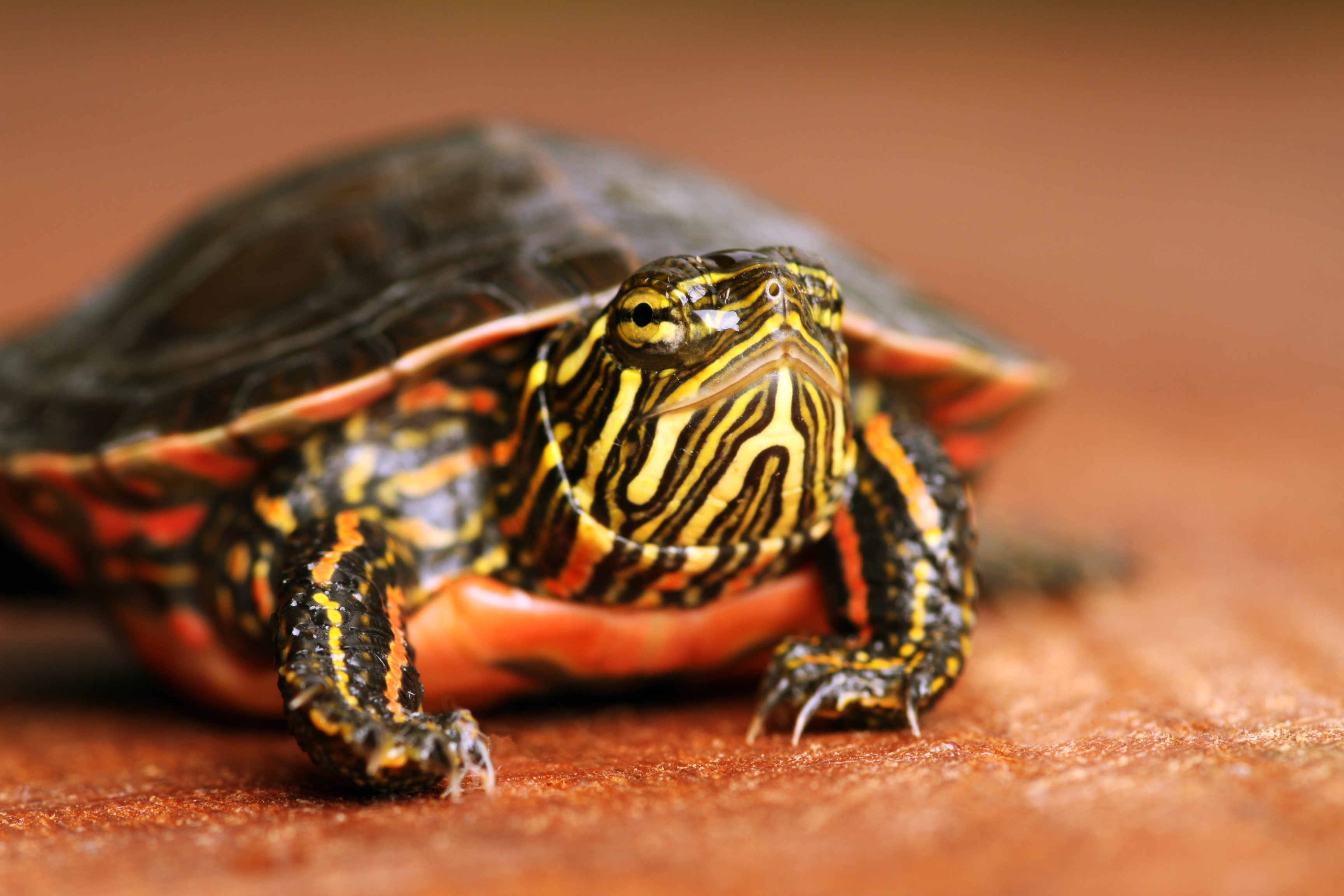
Feeding and Diet
Aquatic turtles eat while swimming, so floating food is preferred. Their diet should include aquatic turtle pellets, fresh leafy vegetables, occasional treats like chopped apple and freeze-dried shrimp, insects, and fish. There are a variety of options made for turtles that will get them excited and give them something to swim after, like Zilla River Shrimp or Turtle Chasers. For complete nutrition in your aquatic turtle’s diet, give Zilla Turtle Sticks a try!
Check the Zilla Feeding Guide for a list of appropriate food options.
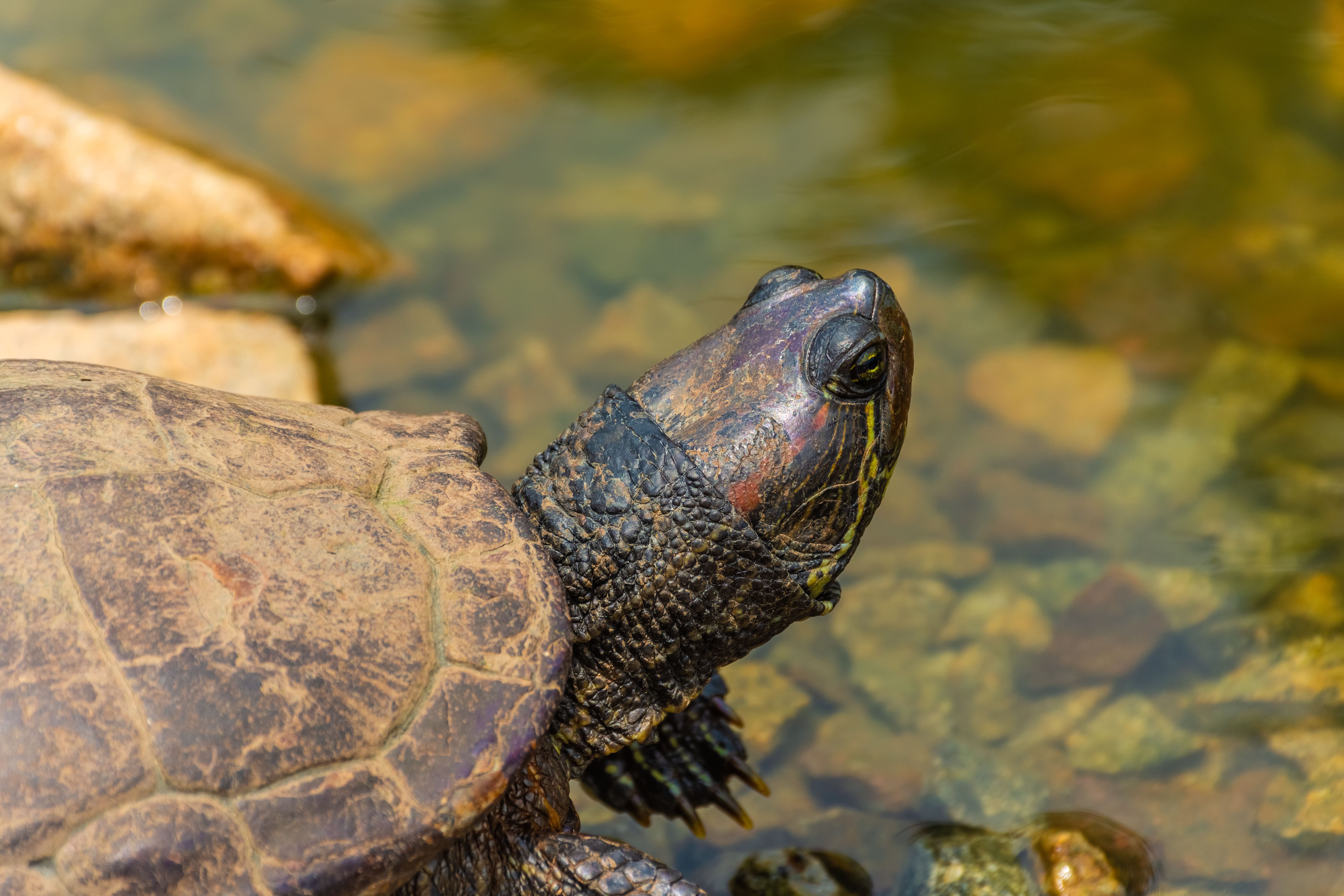
![]()
Handling
Over time you will build a special connection with your turtle during feeding and caring for them. However, many turtles including painted turtles can become stressed when handled. Handle them gently and deliberately and they may become more accustomed to handling over time.
